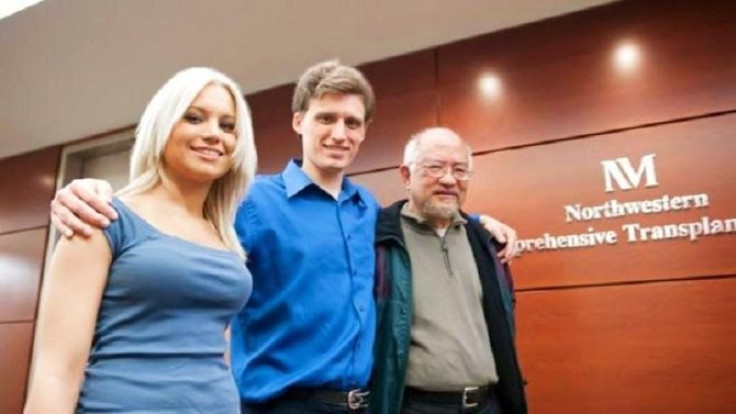Recycled Kidney Successfully Implanted into 2nd Recipient after First Failed Transplant

Surgeons have successfully transplanted a kidney that had already been transplanted in one patient, but started to fail, into a second patient, doctors reported on Wednesday.
In a report, published in the the New England Journal of Medicine, doctors documented the groundbreaking procedures of a kidney that had been transplanted twice in two weeks.
Although transplanted kidneys have previously been removed from recipients who’ve died and given to another patient, the latest procedure was the first time in the U.S. that a living recipient has passed along a donated kidney after it failed in the first transplant, according to doctors at Northwestern Memorial Hospital.
"Normally, when a transplant isn't successful, we have to take it out and discard it because it is doing more damage than good to the patient," said ,” Dr. Lorenzo Gallon, medical director of the kidney transplant program Northwestern Memorial Hospital, told USA Today.
Ray Fearing, 27, was the first transplant recipient of the kidney from his sister, Cera, but when the transplant failed and signs of his focal segmental glomerulosclerosis (FSGS), the most common kind of kidney disease that forms scar tissue in the part of the organ that filters out waste and can lead to kidney failure, started reoccurring days after he received the organ, doctors had no choice but the remove the failing kidney.
"In over 50 percent of cases, transplant does not stop the process of FSGS. When post-surgery tests indicated that Ray was at risk of developing life-threatening conditions due to the reoccurrence of the disease, we had to remove the kidney before he deteriorated,” Gallon, who supervised the transplants in June, said in a statement.
While the transplant failed to work in the first patient, Gallon said that the organ was still relatively healthy, despite having been exposed to FSGS while implanted in Fearing.
After the kidney was removed, doctors had conducted numerous tests on the organ and found that while it was once diseased, it “was still a relatively healthy, viable organ that could be transplanted into someone else without FSG,” Gallon said.
"After numerous discussions to carefully consider this first-ever procedure, we presented Ray with the option to donate his kidney to someone on the national kidney waiting list rather than discarding it," said Gallon.
Fearing agreed to donate the kidney that had been transplanted into him on June 16, and doctors performed the second transplant on June 30.
"To me giving it to someone else seemed like the right thing to do," Fearing, who undergoes dialysis several times a week and is not currently a candidate for another kidney, told USA Today. "This was a gift to me, and I wanted to pass along the gift. I didn't realize what a big thing it was at the time."
Doctors say that after the kidney was transplanted into the second recipient, 67-year-old Erwin Gomez, a surgeon and father of five who had diabetes and high pressure and was at in end-stage kidney failure, the organ had regained function in just eight days after the transplant procedure and tests revealed that the damage caused by FSGS in Fearing's body had been reversed.
"This is a ground-breaking medical moment because it suggests that it is possible to reverse the damage done to a kidney as a result of FSGS after it is re-transplanted into a body with a healthy circulatory system," Dr. Joseph Leventhal, transplant surgeon at Northwestern Memorial Hospital, said in a statement.
"Not only did we save a viable organ from being discarded, we also made significant strides in better understanding the cause of FSGS, which has been relatively unknown, so we can better treat the disease in the future. This proves that when an organ fails in one body, it may thrive in another," Leventhal added.
"It may not have been my time, but I am grateful that I was able to help another patient," Fearing said in a statement. "My day will come."



























